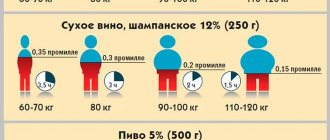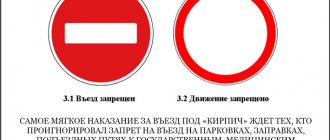Removable - what is it?
Already from the name it becomes clear that such tinting can be removed independently and without any problems. Today the Internet is full of advertisements for the sale of removable tinting. What these sellers offer:
- double windows, one of which is tinted and can be lowered regardless of the second;
- monopolycarbonate plastic, which is about 1 mm thick and sticks to the main glass;
- curtains that have a perforated surface - this is the most common removable tinting;
- silicone tint, in the form of an adhesive film that can be reused.
What is removable tint?
The name itself indicates that this type of tinting can be installed and dismantled repeatedly. There are several options:
- curtains and screens that can be pulled apart;
- electronic tinting (photochromic), its adjustment is carried out automatically, depending on the brightness of the light flux;
- gel film.
The most commonly used type of removable tinting is: a sheet of thin flexible plastic is cut to the shape of car glass, tinted with film and attached to the car glass using double-sided tape. Another method of fastening is also possible: the car window is lowered, a prepared tint sheet is inserted into the opening on the interior side between the seal and the lowered glass, aligned along the top edge of the glass, and then the glass is raised, carefully holding the tint.
What do the traffic rules say and is it prohibited?
There is, of course, no such term in the 2021 Road Traffic Rules, but in the Basic Regulations for the admission of vehicles to operation there is a List of faults and conditions under which the operation of a vehicle is prohibited, and that’s where it is mentioned about additional items or glass coatings that restrict visibility from the driver's seat.
The note to paragraph 7.3 of the List of faults states the following:
It is allowed to use tinted glass (except for mirror glass), the light transmission of which complies with GOST 5727-88. It is allowed to use curtains on the windows of tourist buses, as well as blinds and curtains on the rear windows of passenger cars if there are external rear-view mirrors on both sides.
Of course, our article is about a toner that does not comply with the above GOST, otherwise there would be no point in finding out its legality.
Based on the above, it becomes clear that additional items or covering the glass with removable tinting is prohibited, since clause 7.3 of the List of Faults is violated, and liability is provided for its violation.
Leading manufacturers
Today, static silicone tints are produced by many companies, including ASWF, SunTek, Llumar, Johnson, Silicon Tint and others. These companies have earned a good reputation and produce products of high quality, long service life and excellent performance. For example, Silicon Tint tinting became popular in the early 2000s and is in demand to this day.
Experts advise taking silicone film from well-known manufacturers to avoid poor quality and not be disappointed in the performance.
In general, the leaders in this market are companies from the USA and Great Britain. In addition to the companies already mentioned, it is worth highlighting the following manufacturers - Llumar and CarLife.
To avoid mistakes when choosing, you should carefully study the manufacturer’s line, pay attention to its reputation, read reviews about the product, and then make a purchase. There are many known cases where counterfeits were sold under the name of a particular brand.
Currently
reading
S-AWC all-wheel drive system on Outlander - a marketing ploy or super-all-wheel control
3.9k
Driver's license for bicycles and electric scooters. Will they be introduced in 2021?
3.6k
Requirement or requirement for removable toner
Our law enforcement officers have gone further in the fight against tinting. In addition to the fine provided for by the Code of Administrative Offenses, they began to issue (issue) a requirement (order) to drivers held accountable for this offense.
The text of these documents may vary, but the meaning is that the police officer demands that the driver no longer break the law and eliminate the existing violation, that is, remove the tint.
If the driver does not comply with this requirement, he may be charged under Art. 19.3 of the Administrative Code, which provides for liability in the form of either a fine from 500 to 1000 rubles, or administrative arrest for up to 15 days.
Disputes about the legality of such demands continue to this day. However, judicial practice goes its own way, and the Supreme Court, considering complaints from drivers about bringing them to justice under Art. 19.3 of the Code of Administrative Offenses, confirmed the legality of such requirements in the pending cases of APN. As, for example, in this Resolution of the Armed Forces of the Russian Federation No. 19-AD17-10 of May 10, 2021.
Repeated fine for tinting
According to current legislation, in accordance with the Code of Administrative Offences, Art. 12.5 part 3.1 for driving a car with tinted windows that do not comply with GOST, a fine of 500 rubles may be imposed. with the opportunity to eliminate violations within 10 days.
If the order is not complied with within the specified period, and the violation is repeated, the amount of the fine increases to 1000 rubles. with the possibility of being involved in community service within 15 days by court decision.
Important note!
- This article provides basic information, but each case is different.
- In 92% of all situations there are important nuances that can affect the outcome of the entire case.
- An experienced lawyer will study all the materials of the case and indicate in which direction to move.
Therefore, our website employs on-duty legal consultants who delve into each case and are aimed at solving it.
Ask a Question
or consult toll-free (Moscow), (St. Petersburg), 8 (all of Russia).
How to pay a fine and in what cases a “discount” of 50% is provided
It has already been shown above how important it is to pay administrative fines to the traffic police. Now is the time to consider the 4 most common methods of payment:
- Through the bank. Not all financial and credit organizations work with the payment of fines. As a rule, this service is provided only by banks with state participation like Sberbank. For a small fee, anyone with a passport and a payment receipt can pay off the fine.
- Through electronic payment systems like Qiwi. The main disadvantage of this method is a fairly significant commission, the amount of which is recommended to be clarified when paying.
- Through the traffic police website. Using license plates and a vehicle certificate, you can check all the fines on your car and pay them without a fee.
- Through the State Services website. Using your driver's license number, you can check all your unpaid fines, no matter how many cars you drive. Payment is also made without commission in a way convenient for you.
From January 1, 2021, in accordance with Part 1.3 of Art. 32.2 of the Code of Administrative Offenses of the Russian Federation, a discount of 50% applies to payment of a fine for illegal tinting of the traffic police. In order to legally pay only half of the amount, you need to meet it within the first twenty days from the moment the fine was imposed.
Cancellation of registration
But what is a fine of 1000 rubles or an arrest for 15 days for real tinting lovers? To combat such habitual violators, the traffic police came up with another option, namely deregistration of the vehicle.
The legality of this initiative should also be clarified in court and preferably in the Supreme Court, since the cancellation of registration is motivated by a change in the design of the vehicle, which tinting, both permanent film and removable, is not. This position expresses the opinion of the author and does not claim to be the unconditional truth, therefore, in a dispute with traffic police inspectors or MREO employees, be prepared for the fact that this position will have to be defended in court.
Procedure for monitoring the light transmittance of car windows
The only way to determine the percentage of light transmittance of automobile glass is to conduct a test using a special taumeter device. A police officer does not have the right to determine “by eye” whether the technical condition of a car’s windows meets the standards established in our country. The motorist should pay special attention to compliance with the research procedure, since any violation can lead to distortion of the test results and, as a result, unreasonable prosecution. Even if a violation actually took place and the windows are too heavily tinted, then if the traffic police officer fails to comply with the control procedure, you have the opportunity to effectively challenge the prosecution in court.
Video: unexpected results of tinting measurements
Conditions for monitoring light transmittance
Measurement of glass light transmittance should be carried out under the following conditions:
- temperature from 15 to 25 °C;
- pressure from 86 to 106 kPa (kilopascals);
- relative air humidity from 40 to 80%.
Under conditions other than those specified, the authorized person is not entitled to conduct research. However, we note that the standard does not say a word about the time of day for conducting the study, so light transmission testing can be carried out both during the day and at night.
Who and where has the right to control light transmission?
According to Part 1 of Art. 23.3 of the Code of Administrative Offenses of the Russian Federation, police authorities consider cases of administrative offenses expressed in the installation of car windows with an unacceptable degree of tinting. In accordance with clause 6, part 2 of the same article of the Code of Administrative Offenses, light transmission control can be carried out by any traffic police officer with a special rank. The list of special ranks is set out in Article 26 of the Federal Law “On the Police”.
A traffic police officer of any rank has the right to check the light transmission of car windows and subsequently draw up a report on an administrative offense
The legislation of the Russian Federation does not currently contain any mandatory rules regarding the location of the inspection. Therefore, control of the light transmittance of car windows can be carried out both at a stationary traffic police post and outside it.
Features of the light transmission testing procedure
In general, when performing a check, the following happens:
- First of all, the traffic police officer must take measurements of weather conditions and make sure that they comply with those set out in the state standard.
- Then the glass being tested should be cleaned from road dirt and dust, as well as any traces of moisture, as they affect the results of the study.
- After this, you need to adjust the taumeter so that in the absence of light it shows zero. (clause 2.4. GOST).
- Finally, insert glass between the diaphragm and the taumeter and take measurements at three points.
It should be noted that in practice, traffic police inspectors do not take into account the provisions of GOST on weather conditions and the rules on measurements at three points, guided by the instructions attached to the measuring device. Almost all devices available to police officers are approved for use at temperatures from -40 to +40 °C and are unpretentious to other weather anomalies. For this reason, it is unwise to build a defense strategy based on non-compliance with the rules described above.
Instruments used to test light transmittance
At the moment, the traffic police traffic police are armed with the following taumeters:
- "Light";
- "Blik";
- "Blik+";
- "Tonic".
Regardless of what model of taumeter will be used when checking the car glass, for the purity of the procedure, the traffic police officer must, if desired, show the car owner the device itself, so that the latter can make sure that the taumeter is sealed in accordance with the rules. Moreover, the driver must be presented with documents confirming the certification and suitability of the device for carrying out measurements (verification certificate, etc.). Finally, the traffic police inspector must confirm his own competence.
A taumeter suitable for use must have a seal and a whole package of accompanying documents
If these simple rules are not followed, any evidence cannot be used to prove guilt, since it was obtained in violation of the law.
In my practice, there were 2 cases when traffic police officers blatantly violated the law when checking glass for light transmission. In one of them, the inspector tried to fine the driver without bothering to take measurements, so to speak, “by eye.” The situation was resolved successfully after calling the lawyer. In another, a police officer tried to falsify the measurement results by placing a darkened film under one of the parts of the taumeter. Fortunately, the car enthusiast was attentive and prevented the violation of his rights on his own.
How to avoid a fine?
The first thing that will help you avoid a fine is compliance with traffic rules and other legal acts in the field of road traffic, that is, not using removable tinting as such.
But, if you cannot imagine driving a car without tinting the front or side windows, then it is almost impossible to avoid a fine, unless the inspector independently decides not to fine you.
But even this kind inspector will force you to eliminate the violation on the spot, since every start of driving in a tinted car constitutes a new administrative offense.
Those who think that since the tint is removable, they will quickly take it off and move on are mistaken. The fact that you remove (remove) the tint will not relieve you from an already committed offense and responsibility for it.
Moreover, the inspector, realizing that you will drive around the corner and put everything back in place, may try to confiscate the removable tint from you as an object or instrument of an administrative offense that has the value of evidence in the case in accordance with Article 27.10 of the Code of Administrative Offenses of the Russian Federation, and You will then argue in court about the legality of these actions of his.
Price issue
The car owner has two options at his disposal - to act independently or to hire professionals to install silicone tinting.
Let's look at the costs for each option:
- When installing it yourself, you only have to spend money on purchasing the material. Thus, removable tinting on the windshield costs $17.5. When purchasing a product in linear meters, its cost is about $7 (per linear meter). In a roll 1 m wide and 30 meters long, silicone film will cost $125-130. If you order 10 rolls more, you can save up to $10-20 on your purchase.
- If professionals are involved, installation costs will be higher. For example, installing silicone tinting on two side windows of a passenger car costs about $35. If you need to tint a minivan or SUV, the cost increases to $45 or more. Re-installation, if the car owner does not want to do the work himself, will cost $7.











